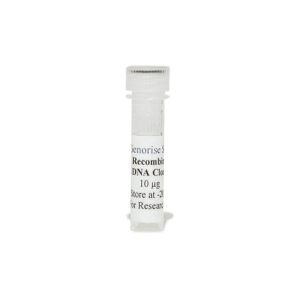Nori Human S100A9 ELISA Kit
$461.00 – $832.00
DataSheet CoA SDS
This ELISA kit is for quantification of S100A9 in human. This is a quick ELISA assay that reduces time to 50% compared to the conventional method, and the entire assay only takes 3 hours. This assay employs the quantitative sandwich enzyme immunoassay technique and uses biotin-streptavidin chemistry to improve the performance of the assays. An antibody specific for S100A9 has been pre-coated onto a microplate. Standards and samples are pipetted into the wells and any S100A9 present is bound by the immobilized antibody. After washing away any unbound substances, a detection antibody specific for S100A9 is added to the wells. Following wash to remove any unbound antibody reagent, a detection reagent is added. After intensive wash a substrate solution is added to the wells and color develops in proportion to the amount of S100A9 bound in the initial step. The color development is stopped, and the intensity of the color is measured.
Alternative names for S100A9: S100 calcium-binding protein A9, S100-A9, migration inhibitory factor-related protein 14 (MRP14) or calgranulin B
This product is for Laboratory Research Use Only not for diagnostic and therapeutic purposes or any other purposes.
- Description
- How Elisa Works
- Product Citation (0)
- Reviews (0)
Description
Nori Human S100A9 ELISA Kit Summary
Alternative names for S100A9: S100 calcium-binding protein A9, S100-A9, migration inhibitory factor-related protein 14 (MRP14) or calgranulin B
| Assay Type | Solid Phase Sandwich ELISA |
| Format | 96-well Microplate or 96-Well Strip Microplate |
| Method of Detection | Colorimetric |
| Number of Targets Detected | 1 |
| Target Antigen Accession Number | P06702 |
| Assay Length | 3 hours |
| Quantitative/Semiquantitative | Quantitative |
| Sample Type | Plasma, Serum, Cell Culture, Urine, Cell/Tissue Lysates, Synovial Fluid, BAL, |
| Recommended Sample Dilution (Plasma/Serum) | No dilution for sample <ULOQ; sufficient dilution for samples >ULOQ |
| Sensitivity | 12 pg/mL |
| Detection Range | 62.5-4000 pg/mL |
| Specificity | Natural and recombinant human S100A9 |
| Cross-Reactivity | < 0.5% cross-reactivity observed with available related molecules, < 50% cross-species reactivity observed with species tested. |
| Interference | No significant interference observed with available related molecules |
| Storage/Stability | 4 ºC for up to 6 months |
| Usage | For Laboratory Research Use Only. Not for diagnostic or therapeutic use. |
| Additional Notes | The kit allows for use in multiple experiments. |
Standard Curve
Kit Components
1. Pre-coated 96-well Microplate
2. Biotinylated Detection Antibody
3. Streptavidin-HRP Conjugate
4. Lyophilized Standards
5. TMB One-Step Substrate
6. Stop Solution
7. 20 x PBS
8. Assay Buffer
Other Materials Required but not Provided:
1. Microplate Reader capable of measuring absorption at 450 nm
2. Log-log graph paper or computer and software for ELISA data analysis
3. Precision pipettes (1-1000 µl)
4. Multi-channel pipettes (300 µl)
5. Distilled or deionized water
Protocol Outline
1. Prepare all reagents, samples and standards as instructed in the datasheet.
2. Add 100 µl of Standard or samples to each well and incubate 1 h at RT.
3. Add 100 µl of Working Detection Antibody to each well and incubate 1 h at RT.
4. Add 100 µl of Working Streptavidin-HRP to each well and incubate 20 min at RT.
5. Add 100 µl of Substrate to each well and incubate 5-30 min at RT.
6. Add 50 µl of Stop Solution to each well and read at 450 nm immediately.
Background:
S100 calcium-binding protein A9 (S100A9) also known as migration inhibitory factor-related protein 14 (MRP14) or calgranulin B is a protein that in Porcines is encoded by the S100A9 gene.[1] The proteins S100A8 and S100A9 form a heterodimer called calprotectin. S100A9 is a member of the S100 family of proteins containing 2 EF hand calcium-binding motifs. S100 proteins are localized in the cytoplasm and/or nucleus of a wide range of cells, and involved in the regulation of a number of cellular processes such as cell cycle progression and differentiation. This protein may function in the inhibition of casein kinase. MRP14 complexes with MRP-8 (S100A8), another member of the S100 family of calcium-modulated proteins; together, MRP8 and MRP14 regulate myeloid cell function by binding to Toll-like receptor 4 (TLR4)[2] and the receptor for advanced glycation end products.[3] MRP-8/14 broadly regulates vascular inflammation and contributes to the biological response to vascular injury by promoting leukocyte recruitment.[4] MRP-8/14 also regulates vascular insults by controlling neutrophil and macrophage accumulation, macrophage cytokine production, and SMC proliferation. MRP-8/14 may be a useful biomarker of platelet and inflammatory disease activity in atherothrombosis and may serve as a novel target for therapeutic intervention.[5] MRP-14 expression increases before ST-segment-elevation myocardial infarction (STEMI), and increasing plasma concentrations of MRP-8/14 among healthy individuals predict the risk of future cardiovascular events.[6] S100A9 has been implicated in the abnormal differentiation of myeloid cells in the stroma of cancer, and to leukemia progression.[7]
References
- Lagasse E, Clerc RG (1988). Mol. Cell. Biol. 8(6): 2402–10.
- Vogl T, et al. (2007). Nat. Med. 13(9): 1042–9.
- Boyd JH, et al. (2008). Circ. Res. 102(10): 1239–46.
- Croce K, et al. (2009). Circulation. 120(5): 427–36.
- Morrow DA, et al. (2008). Am. Heart J. 155(1): 49–55.
- Healy AM, et al. (2006). Circulation. 113(19): 2278–84.
- Cheng Pet al. (2008). J. Exp. Med. 205(10): 2235–49.
Be the first to review “Nori Human S100A9 ELISA Kit”
You must be logged in to post a review.





























Reviews
There are no reviews yet.